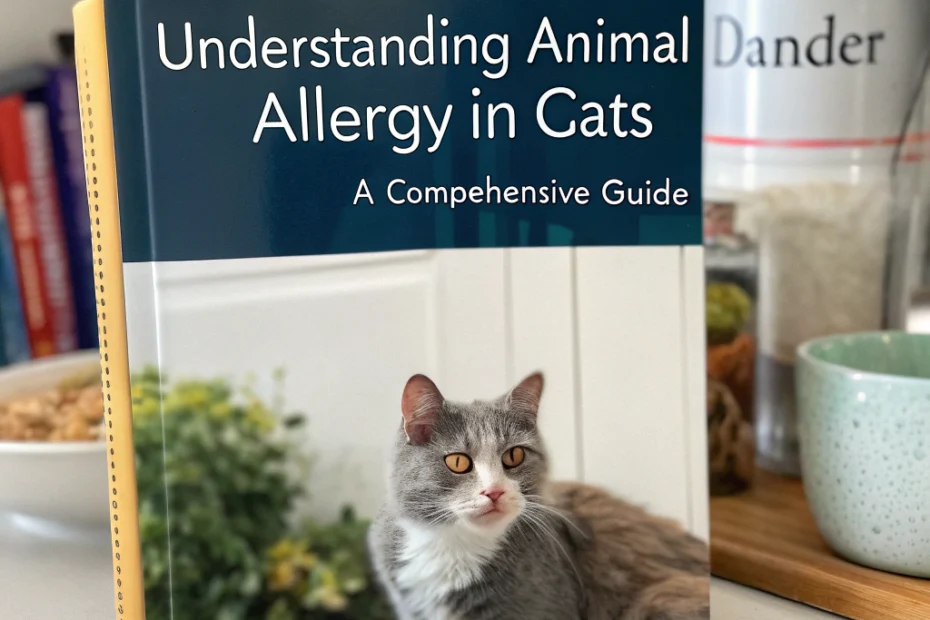At-a-Glance
Animal dander allergy is a common concern for many cat owners. Understanding this condition can help you manage your cat’s health more effectively. Dander consists of tiny, even microscopic, flecks of skin shed by cats. These particles can trigger allergic reactions in sensitive individuals, including both humans and other pets. While managing an animal dander allergy can seem daunting, there are several strategies and products that may help reduce symptoms and improve your cat’s well-being.
How to Choose
When selecting products to help manage animal dander allergy, consider options that are specifically designed to reduce allergens. Look for products that are commonly used for controlling dander, such as special shampoos and grooming tools. Additionally, air purifiers with HEPA filters can support a cleaner environment by capturing airborne dander particles. It’s important to choose products that are safe for your cat and suit their specific needs.
Consult with your veterinarian to discuss potential solutions and get recommendations tailored to your cat’s health. They can provide guidance on which products may be most effective based on your cat’s breed, age, and any existing health conditions.
Safety & Setup
Safety is paramount when dealing with animal dander allergy. Always follow the instructions provided with any product you choose to use. For instance, if you’re using a dander-reducing shampoo, ensure it is formulated for cats and avoid getting it in your cat’s eyes or ears. Regular grooming can help minimize dander, but be gentle to avoid irritating your cat’s skin.
Setting up an environment that minimizes dander exposure is also crucial. This may include regular cleaning of your home, using vacuum cleaners with HEPA filters, and keeping your cat’s sleeping area clean. Consider placing washable covers on furniture and washing them frequently to reduce allergen buildup.
Core Pillars
Managing animal dander allergy involves several core pillars: regular grooming, environmental control, and dietary considerations. Regular grooming helps reduce the amount of dander your cat sheds. Use grooming tools that are designed to capture loose hair and dander effectively.
Environmental control includes maintaining a clean home environment. Air purifiers can be particularly helpful in reducing airborne allergens. Additionally, consider using hypoallergenic bedding and cleaning products that are safe for pets.
Dietary considerations can also play a role in managing dander. A balanced diet that supports skin health may help reduce dander production. Discuss with your veterinarian about dietary supplements that can support your cat’s skin and coat health.
Placement & Environment Tips
Strategic placement of your cat’s bed and litter box can help manage dander. Keep these items in areas that are easy to clean and away from high-traffic areas to minimize the spread of allergens. Regularly wash your cat’s bedding and vacuum around these areas to reduce dander accumulation.
Consider using air purifiers in rooms where your cat spends the most time. This can help capture dander and other allergens, making the environment more comfortable for both your cat and any allergy-sensitive individuals in your home.
Comparison with Alternatives
When comparing products designed to manage animal dander allergy, consider their effectiveness, ease of use, and safety. For example, dander-reducing shampoos are a direct approach to reducing allergens on your cat’s skin and coat. In contrast, air purifiers address the problem by cleaning the air in your home.
Grooming tools can vary in effectiveness depending on their design and your cat’s coat type. Some tools are better suited for long-haired cats, while others are designed for short-haired breeds. Evaluate these options based on your specific needs and consult with your veterinarian for recommendations.
FAQs
What is animal dander?
Animal dander consists of tiny particles of skin shed by animals, including cats. These particles can trigger allergic reactions in sensitive individuals.
How can I reduce dander in my home?
Regular cleaning, using air purifiers, and grooming your cat frequently can help reduce dander levels in your home.
Are there specific products that can help with dander allergies?
Yes, there are shampoos, grooming tools, and air purifiers that are commonly used to help manage dander allergies. Consult with your veterinarian for personalized advice.
What to Do Next
If you suspect your cat is contributing to an animal dander allergy, consider consulting with your veterinarian. They can provide guidance on managing the allergy and recommend products that may help reduce symptoms. Regular grooming, maintaining a clean environment, and considering dietary supplements are steps you can take to support your cat’s health and reduce dander.
Disclaimer: Always consult your veterinarian for personalized advice regarding your cat’s health.
